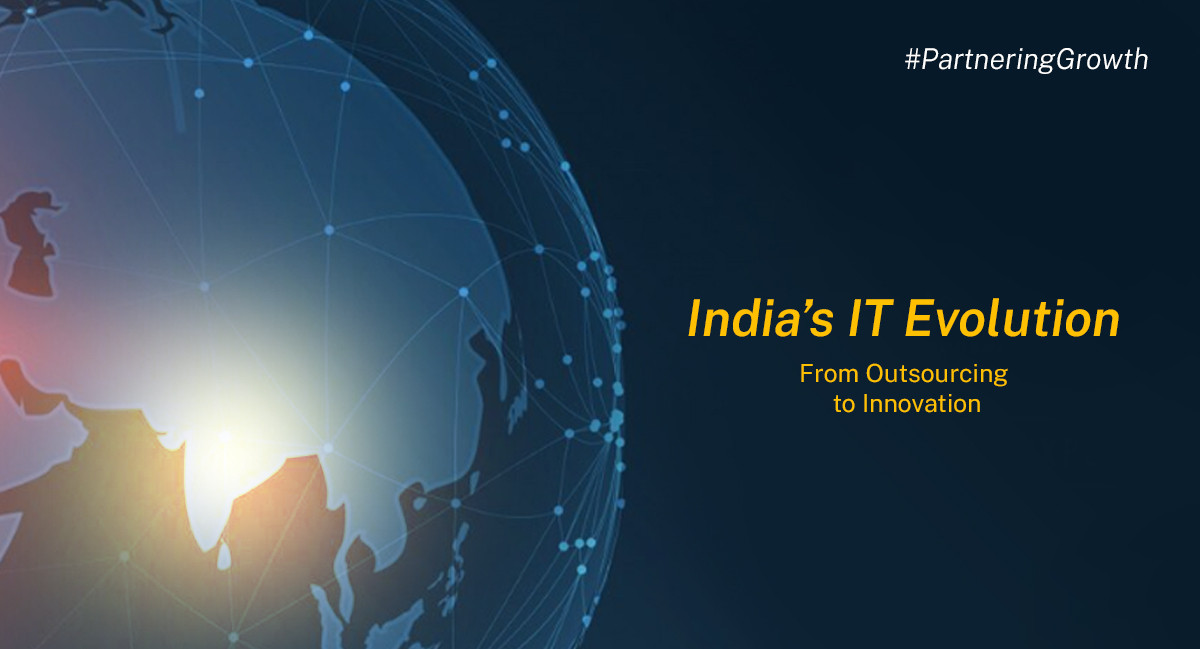


For decades, India has been known as the world’s outsourcing hub. Global companies turned to India for cost-effective IT services, from customer support to back-office operations. But the story of Indian IT has changed dramatically. What was once a service-driven, cost-saving proposition has now evolved into a global innovation engine powering digital transformation across industries.
The Outsourcing Era
In the 1990s and early 2000s, multinational corporations discovered India’s unique advantages:
• A large English-speaking workforce
• Strong technical education system
• Significantly lower costs compared to Western economies
This made India the preferred location for outsourcing IT services, software development, and support functions. Giants like Infosys, TCS, and Wipro became household names, while India’s cities like Bengaluru, Hyderabad, and Pune earned their reputation as technology hubs.
The outsourcing boom helped India establish itself as a reliable partner, creating millions of jobs and positioning the IT sector as a cornerstone of the economy.
Moving Up the Value Chain
Over time, clients wanted more than just cost savings. They needed complex problem-solving, consulting, and digital innovation. Indian IT firms adapted quickly, moving beyond coding and support to delivering high-value solutions in:
• Cloud computing and data analytics
• Artificial intelligence and machine learning
• Cybersecurity services
• Digital transformation consulting
This shift allowed Indian IT to compete not just on cost, but on capability and creativity.
The Innovation Wave
Today, India’s IT story is no longer about outsourcing. It’s about innovation at scale. The industry is working on cutting-edge technologies that shape industries worldwide:
• Healthcare: AI-driven diagnostics and telemedicine platforms
• Banking & Finance: Blockchain solutions and secure payment systems
• Retail: Data analytics for personalised customer experiences
• Sustainability: Smart grids and energy management solutions
Multinational corporations are no longer just outsourcing tasks to India; they are setting up R&D centres, global capability hubs, and innovation labs here. In fact, India now hosts some of the world’s largest global capability centres (GCCs), where Fortune 500 firms conduct critical research and innovation.
Start-ups and Homegrown Innovation
The rise of India’s start-up ecosystem has added a new dimension to this journey. With over 100 unicorns, India is now one of the world’s largest start-up hubs. From fintech leaders like PhonePe to SaaS pioneers like Zoho, Indian companies are innovating for both domestic and global markets.
This entrepreneurial energy is complementing the established IT giants, creating a diverse ecosystem of services, products, and platforms.
Policy and People Power
Government initiatives such as Digital India, Startup India, and Make in India have supported this transformation, encouraging investment and digital adoption.
At the same time, India’s demographic advantage, a young, tech-savvy population, continues to fuel the industry’s growth. With nearly 1.5 million engineers graduating every year, the talent pool remains one of the deepest in the world.
What Lies Ahead
As India moves from outsourcing to innovation, a few trends are likely to define the next chapter:
• AI and automation will transform IT services, pushing companies towards higher-value solutions.
• Global capability centres will grow further, cementing India’s role as a hub for enterprise innovation.
• Deep tech start-ups will play a bigger role in healthcare, climate tech, and fintech.
• Skill development will be key, ensuring the workforce is ready for advanced technologies.
Conclusion:
India’s IT industry has travelled an incredible journey from being the world’s outsourcing destination to becoming a global innovation powerhouse. What began as a cost advantage has matured into a value-driven, innovation-led sector shaping the digital future of businesses worldwide.
The next phase promises even more- deeper integration into global innovation networks, homegrown tech breakthroughs, and a continued role as one of the world’s most dynamic IT landscapes.